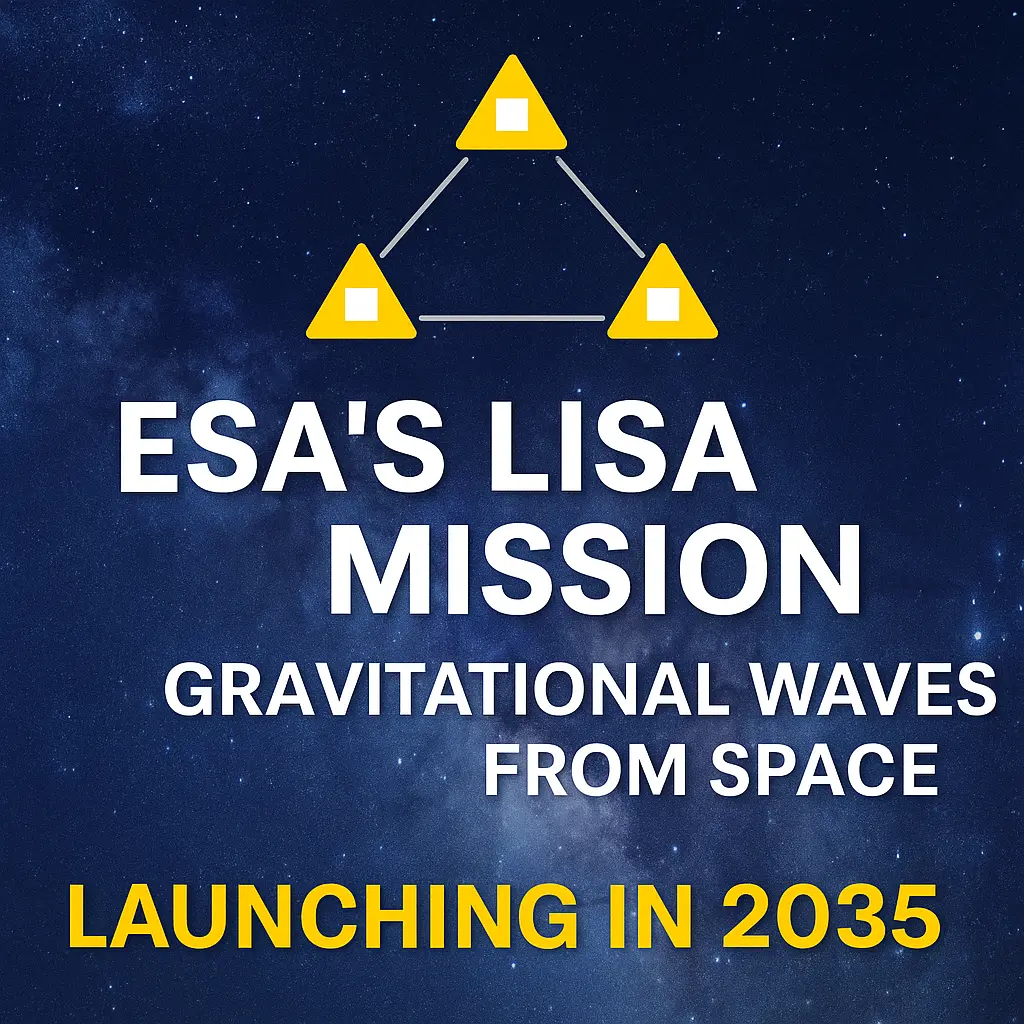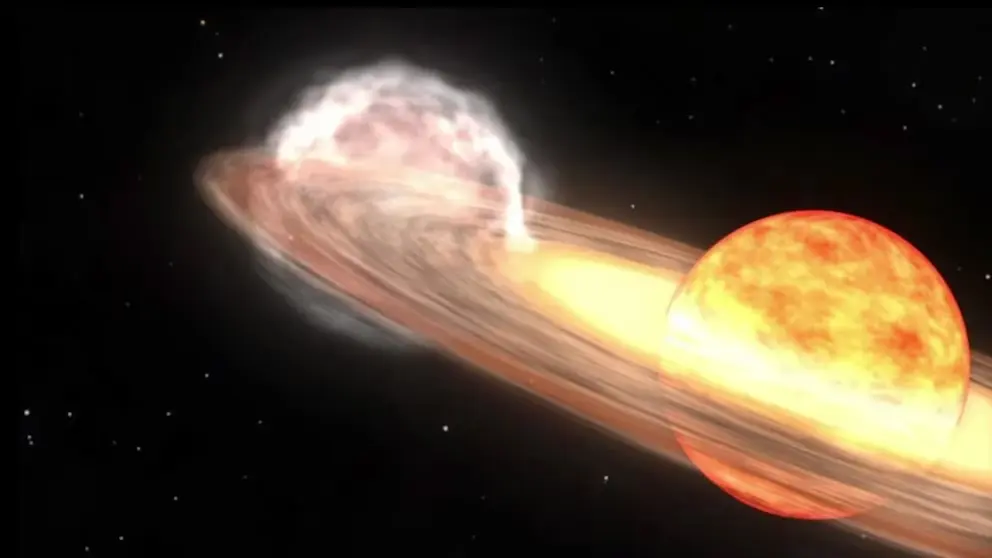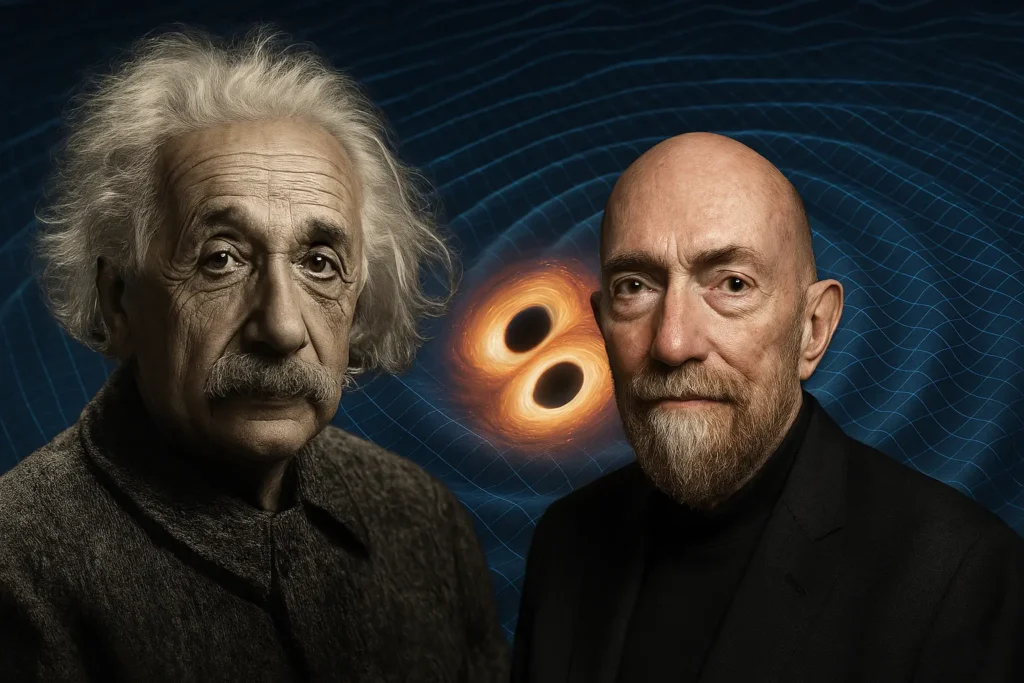Pioneering a New Era in Astrophysics
October 26, 2023
The European Space Agency (ESA) has officially initiated the industrial development of the Laser Interferometer Space Antenna (LISA) mission—an unprecedented scientific endeavor poised to revolutionize our understanding of the Universe. This ambitious space-based observatory, developed in partnership with NASA and an international scientific consortium, represents a monumental leap in gravitational wave astronomy and will serve as the first mission to detect these elusive phenomena from space.
With a projected launch date in 2035, LISA will extend humanity’s perceptual reach far beyond the capabilities of ground-based observatories, enabling exploration of some of the most cataclysmic and enigmatic events in the cosmos.
A Revolutionary Gravitational Wave Observatory
LISA is the first mission designed to study gravitational waves from space—ripples in the fabric of spacetime predicted by Einstein’s General Theory of Relativity. Unlike Earth-bound detectors such as LIGO and Virgo, LISA will operate in a low-frequency range inaccessible from the ground, making it uniquely equipped to detect signals from massive, slow-moving astrophysical events. These include the mergers of supermassive black holes, interactions in compact binary star systems, and possibly even remnants of the Big Bang itself.
Positioned in a heliocentric orbit trailing Earth, the mission will operate through a formation of three identical spacecraft arranged in an equilateral triangle, each separated by 2.5 million kilometers. This configuration forms the basis of LISA’s interferometer—a system that measures minute changes in the distances between freely floating test masses within the spacecraft, caused by passing gravitational waves.
Scientific Objectives and Transformative Potential
LISA’s scientific goals are as ambitious as its design. Among its primary objectives is the ability to trace the growth and merger history of supermassive black holes, shedding light on the evolution of galaxies over billions of years. It will also offer unprecedented data on the structure and behavior of compact binary star systems within our own galaxy.
At the frontier of theoretical physics, LISA will provide an unparalleled platform for testing the fundamental nature of gravity. By precisely measuring gravitational waves, the mission may reveal deviations from General Relativity and contribute to resolving questions about the expansion rate of the Universe and the elusive nature of dark matter and dark energy.
Professor Carole Mundell, ESA’s Director of Science, encapsulated the mission’s significance: “LISA will open a brand-new window on the dark Universe and test the known laws of physics to their extreme.”
Engineering Feats and Technological Innovation
LISA’s sophisticated design presents one of the most formidable engineering challenges in space science history. Each of the three spacecraft will carry a pair of free-floating test masses—solid gold-platinum cubes housed in ultra-sensitive, disturbance-free environments. The distance between these masses will be continuously monitored using laser interferometry, with measurement precision down to a few picometres—less than the diameter of a helium atom over a baseline of 2.5 million kilometers.
This extraordinary sensitivity demands unparalleled precision in spacecraft formation flying, thermal stability, and isolation from non-gravitational forces—making LISA not only a scientific mission but a triumph of space engineering.
A Global Collaboration
The LISA mission is a testament to the power of international cooperation in scientific exploration. Its industrial development was formally launched with the signing of a contract between ESA and OHB System AG at the International Paris Air Show. Chiara Pedersoli, CEO of OHB System AG, remarked, “We are immensely proud that ESA and the scientific community entrust us to implement this groundbreaking science mission.”
The spacecraft are being developed by a core industrial team led by OHB System AG in collaboration with Thales Alenia Space. Numerous ESA member states are contributing critical subsystems:
- Italy and Switzerland: Development of the free-falling test masses.
- Germany, UK, France, Netherlands, Belgium, Denmark, Czech Republic: Picometre-accuracy interferometric detection systems.
- Spain: Provision of the Science Diagnostics Subsystem, including advanced sensors for environmental monitoring.
Looking Ahead to 2035
Slated for launch aboard an Ariane 6 rocket in 2035, LISA will embark on a mission that promises to reshape our understanding of the Universe. Its success will place Europe at the forefront of gravitational wave astronomy, space-based observatories, and precision instrumentation.
More than just a scientific project, LISA is a bold statement of human curiosity and ingenuity. As it ventures into the most silent corners of the cosmos, listening for the whispers of ancient cataclysms, LISA heralds the dawn of a new era in astrophysics—one where the invisible becomes observable, and the darkest mysteries of the Universe begin to unfold.



